
The Townshend Allegri Reference passive pre-amplifier has been in the listening room for some time now. That is quite an event that pushes you out of the comfort zone for a while. The audio sets that are always temporarily built up to write a review, are usually provided with an active preamplifier. In addition to this passive Allegri pre-amp, Townshend has left another fun pack here with some cables and seismic platforms. (For Dutch: click here)
Pre-amps: an introduction
Pre-amps present a very specific mental challenge. A long experience has shown that there are very few preamplifiers that activate the hugging hormone in our brains. Apparently, designing an excellent preamplifier is a challenge for manufacturers. Many of them sound more like a vacuum cleaner from an unknown Russian brand. Manufacturers generally come up with very good power amplifiers. However, if you connect the matching preamplifier, the performance of the combination goes down the drain. The same power amplifier performs at a considerably higher level with a really good pre-amp. That has long been a daily experience in the listening room. So if you own a really good preamplifier, cherish it. You can probably use it for decades to come.
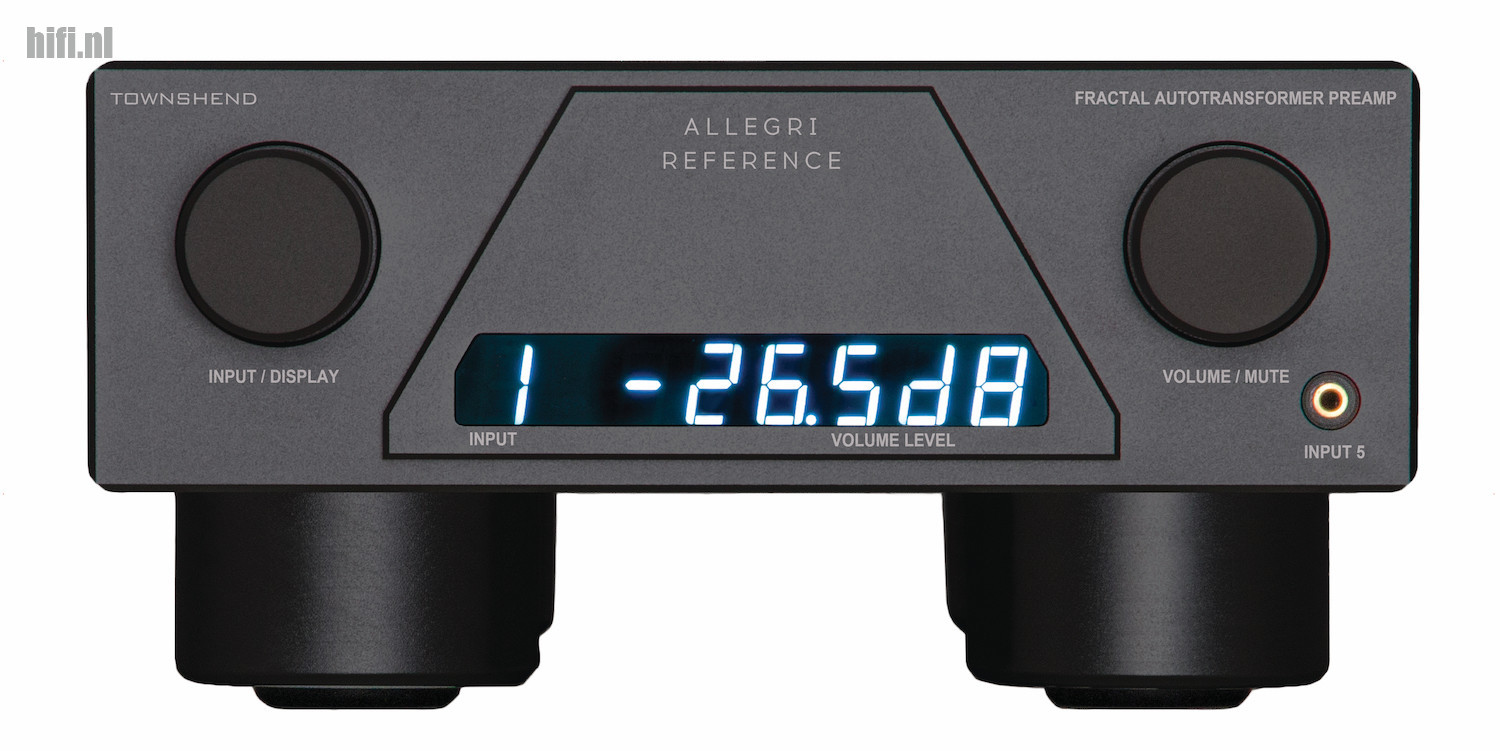
For those who have the same love - hate relationship with pre-amps, the best alternative is to abandon the pre-amp from the system. AirTight from Japan once built a series of integrated amplifiers with only a CD input. The purest signal is then directly transferred to the power stage. Anyway, manufacturers always have their own story about why their preamplifier is the best and why alternative concepts from the competitor are no good. That's called marketing and a sensible consumer simply ignores all that chatter. The undersigned has been making a list of the best performing pre-amps for years. Sometimes amplifiers from the fifties, which you could find years ago at the flea market for 50 euros, does the trick and sometimes it is a modern pre-amp with a 50K price tag. What's so difficult about designing an excellent pre-amp?
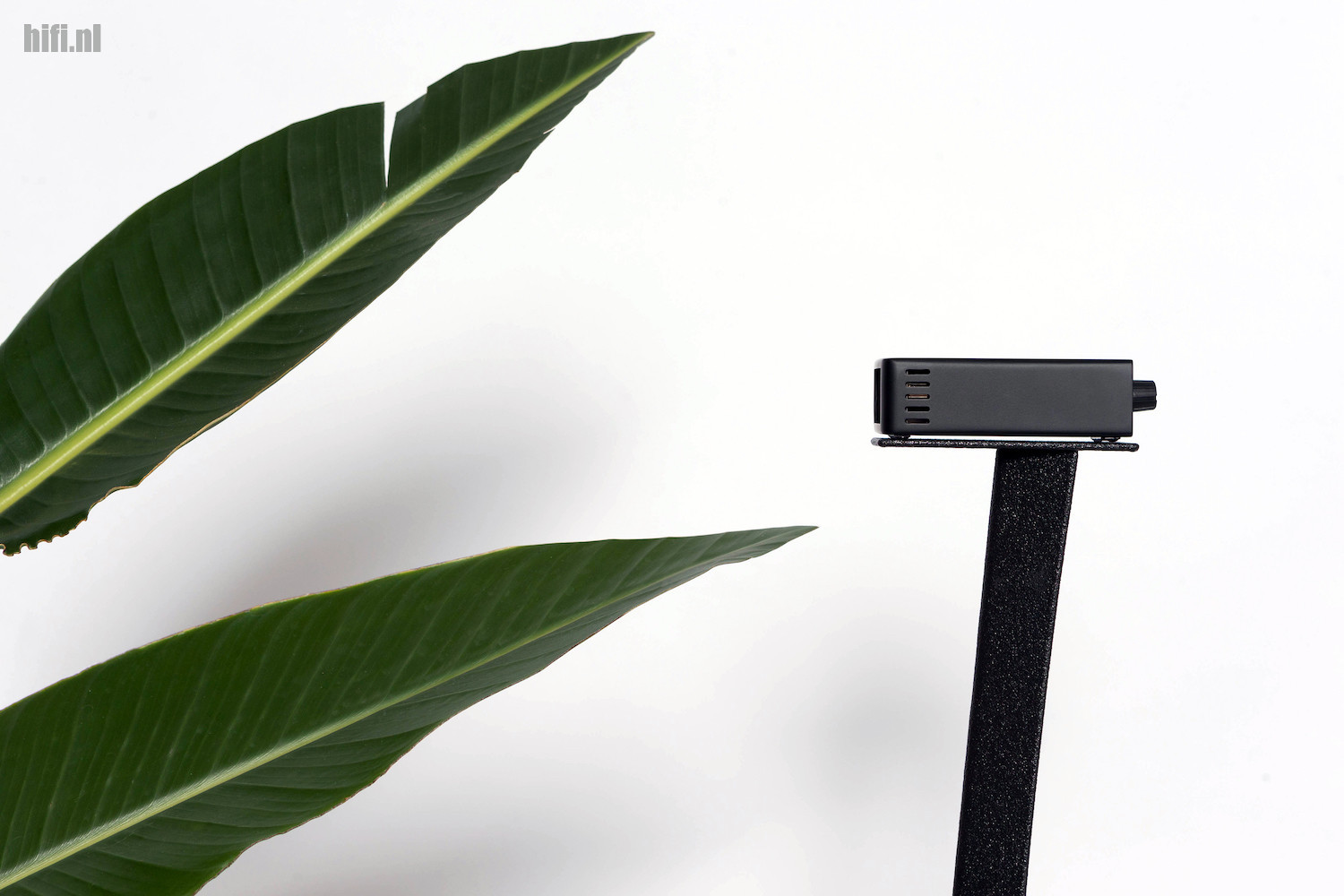
A well-known alternative is the so-called passive preamplifier, which is actually not an amplifier at all. To put it simply, it is just a volume control in a box. Passive pre-amps are part of the endless discussions on internet fora. The countless opinions are completely contradictory. As a consumer you get lost. So try to find some valuable, substantiated and nuanced opinions from knowledgeable and scientific sources.
The origins of the preamplifier
During the earliest development of electronic audio equipment, there were initially amplifiers, but with a much more sensitive input to the signals from record players and microphones. In fact, the predecessors of the current integrated amplifier. Later, separate pre-amps were created. power amplifiers with line-level inputs (although the ones from the English LEAK company also had a high sensitivity) and the integrated amplifiers from brands such as Fisher, Eico and Scott, which took a shape that we still recognize today. It was soon discovered with those first 'integrated' amplifiers that carrying low-level signals and using all kinds of sensitive amplifier stages near large transformers did not improve the sound quality. That was one reason for the development of separate pre-amps.
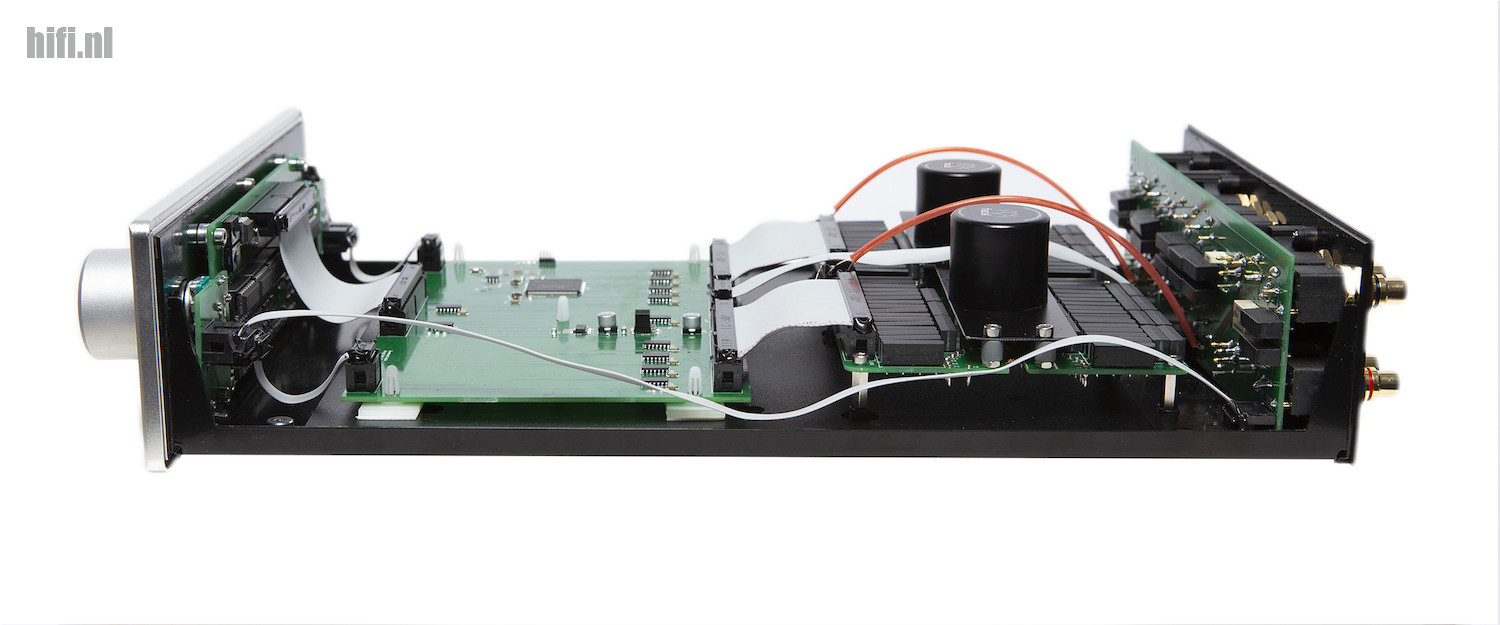
With the advent of stereo, consumers started using two mono power amplifiers and two mono pre-amps. Later, stereo power amplifiers and the stereo preamplifier made their entrance. The first preamplifiers were mainly aimed at amplifying very weak signals. In those early days, few sources existed that offered a line-level signal. Only the tuners, such as the LEAK AM VS-Tuner, which was developed by Winston Electronics for Harold Leak.
Weak signals
The weaker signals in those days originated from gramophones, with crystal and mm cartridges, there were also microphone signals and some preamplifiers had a tape head input. Most of the time, there was only a single line level input for the radio receivers. Because the RIAA curve did not exist in the fifties and each record label applied its own equalization, many preamplifiers had correction curves on board for the various record labels. LEAK's first preamplifier was the RC / PA. It only had three inputs. For radio, microphone and a record player. There were no on-board equalization curves for the different record labels. The sensitivity of the phono input was only 50mV, but many phono cartridges from that time had a fairly high output.
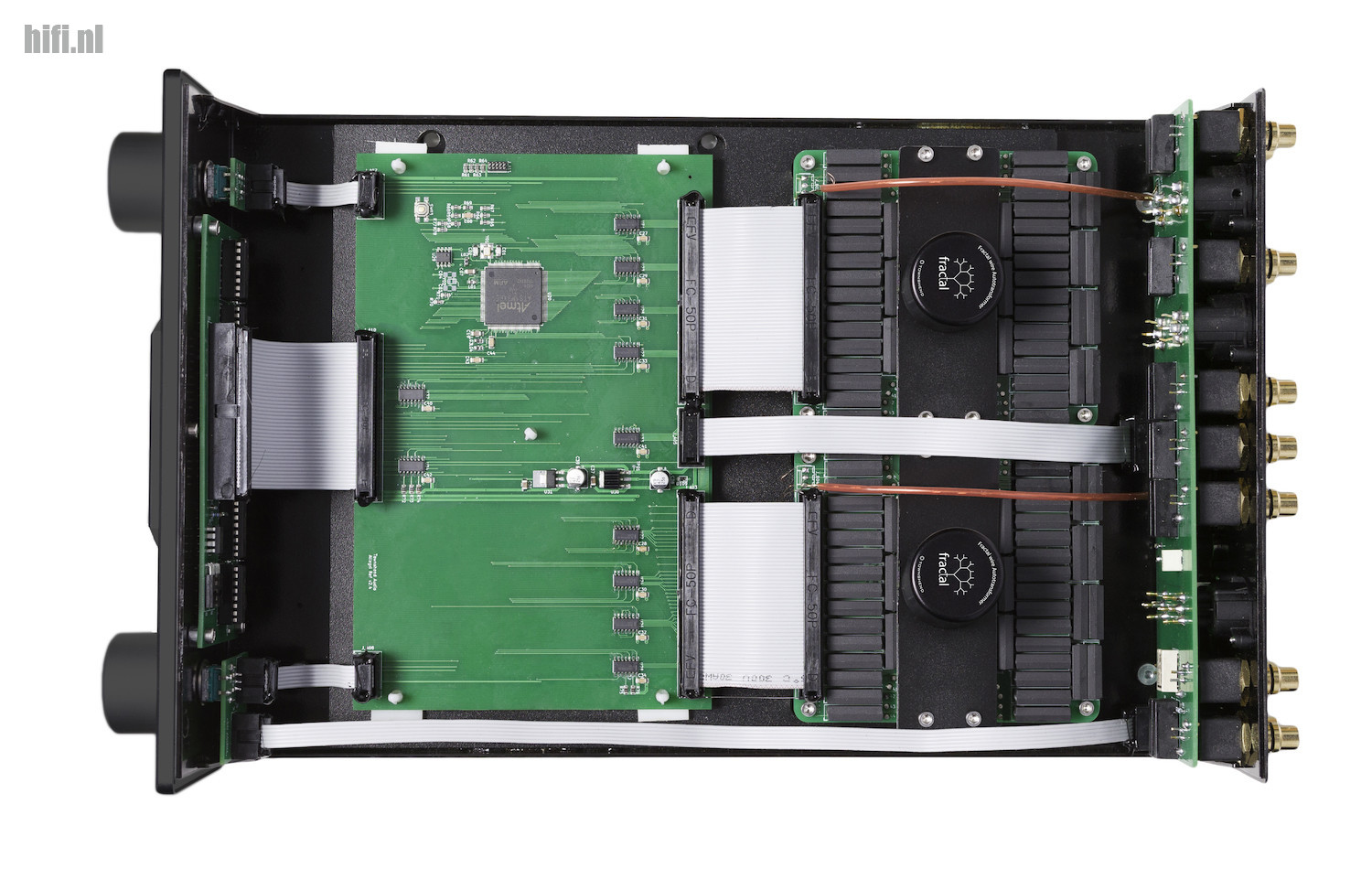
Later there were pre-amps with extensive equalization curves. At LEAK this was the RC / PA / U, which came with three curves (for Decca, Colombia and 78t). But the well-known McIntosh C8 record compensator already had many more equalization curves. In the late 1950s, many pre-amps had equalization curves, a tape input, tone controls, and filters. The common name of these pre-amps was Mono Control Unit. The Audiomaster Mono Control Unit from W&N Electronics in London had a huge amount of equalization curves and even for the upcoming new RIAA standard. In addition, various tape equalization curves and a curve for modern 78 rpm records (on vinyl). Many record collectors still possess mono material that has not yet been cut to the RIAA standard. They still often use these classic pre-amps to play those records.
Stereo
Stereo Control Units were introduced at the beginning of the sixties. With a balance control as a new feature. In addition, there were sometimes filters and tone controls on board. From the beginning, the preamplifier has also had a function as a signal router, in order to switch between the available source signals. Later in history, the line inputs became more important. Tuner, CD, d/a converter, DAT, cassette deck, open reel and also a monitor input and tape loop. Later on there was even a whole generation of preamplifiers without input for a record player. That is over now, because vinyl is booming.
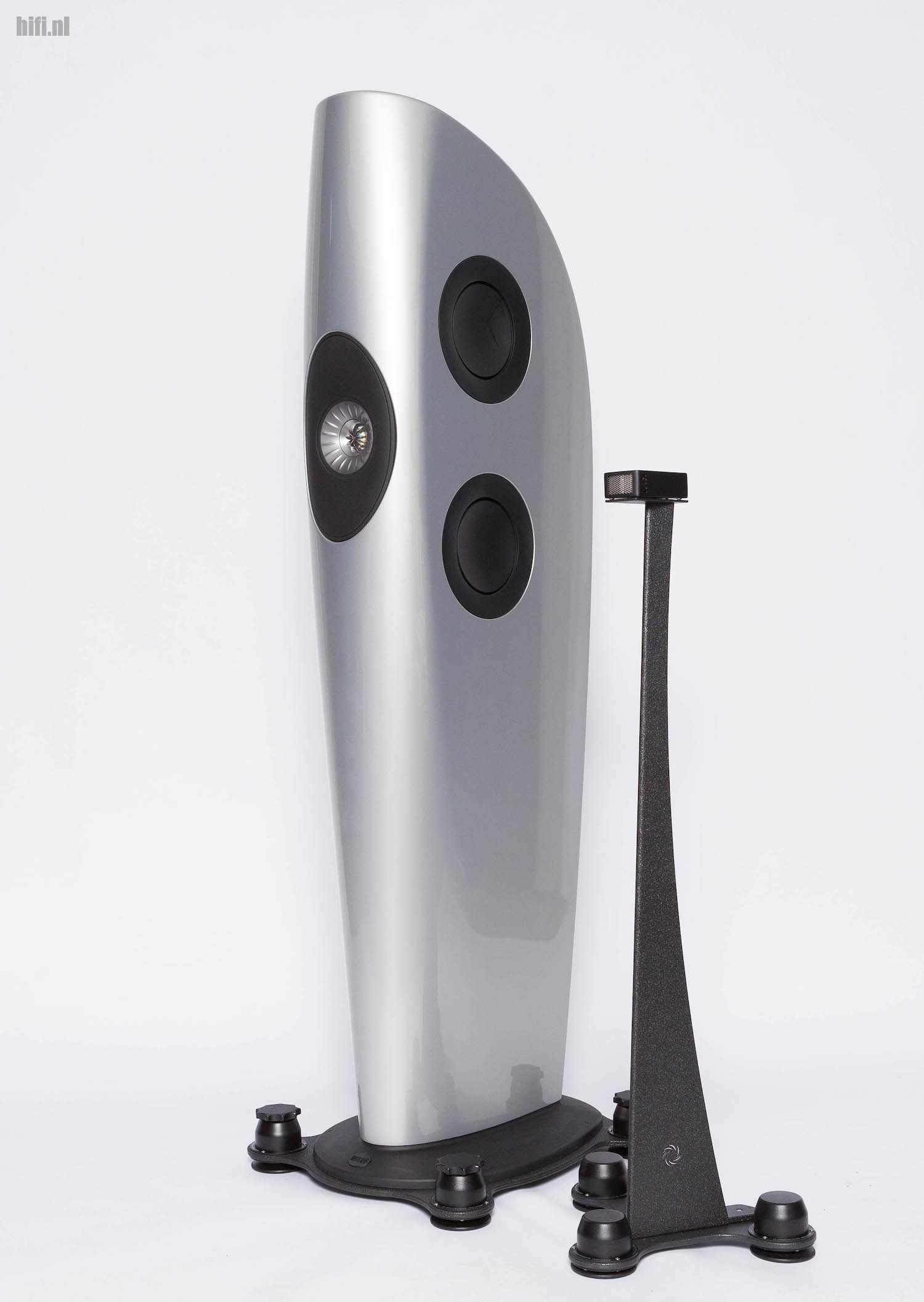
The success of vinyl is evident from the fact that the Japanese Audio Technica company currently has a back order of one million record players. In any case, the preamplifier increasingly became a router, equalizer and often a multichannel Dolby Digital pre-amp. Modern preamplifiers are sometimes even equipped with a DAC, room correction and a streamer. What has become completely unnecessary, except for the possible phono connection, is the possibility to amplify a signal. Many modern sources provide a strong line signal. Therefore, the preamplifier usually works as an attenuator. Some modern pre-amps therefore resemble professional studio mixing consoles. First, the signal is attenuated, then it's amplified and after the tone control, it's again attenuated. There are several attenuators and just as many amplifiers between the input and the output. This can affect signal quality and is a basic nightmare for puristic audiophiles.
When the high-end developed in the eighties, there developed a market for minimalistic and purist preamplifiers with only a volume control, a few inputs and internally as simple as possible circuits. Another response was the arrival of a simpler integrated amplifier. Often with only a volume control and input selection. The purists indicate that everything else is unnecessary. That is often true. A well-placed and matched system in a good acoustic space doesn't need to be modified with all kinds of filters, equalizers and balance controls on a pre-amp.
The passive 'preamplifier'
Another approach to the preamplifier issue was the advent of the passive preamplifier. This movement arose from the puristic high-end idea that you should apply circuits that are as simple as possible and that it is best to leave out all superfluous electronics. There is of course some truth in that. But again, it fits into the endless discussions about tubes versus solid state, digital versus analog, physical media versus streaming, balanced power or straight from the wall, mc versus mm and passive versus active pre-amps.
At a higher level of abstraction, everyone should understand by now that the underlying technical principle is less important than how you implement that technology in practice. So, there are some really good passive pre-amps and some really bad ones. Depending on how you deal with that technique. Cello once built a passive preamplifier called Etude. This passive attenuator was not a success and it was not received very well by major high-profile audio magazines. Curious, because Cello's active pre-amps still are among the best in the world.
Get rid of active electronics
Most modern sources can drive a power amplifier directly. If you don't need amplification, it's best to leave out all active electronics as well. From a purely theoretical point of view, there is something positive to be said about this approach. In any case, a preamplifier adds or omits something to the signal. In both cases the quality decreases. There is no single preamplifier without a recognizable signature, but amplification has become more neutral in recent years. A passive preamplifier therefore ideally consists of a volume control and a number of select-able line inputs. A phono amplifier is often a separate device for critical music lovers. In a passive pre-amp there will be much less influence of interference.
In its simplest form, a passive preamplifier is a potentiometer in a box or a stepper switch with resistors. You can easily build such a thing yourself. Buy the famous blue Alps potentiometer, a metal box and some cinch chassis parts on eBay. Ask the handy cousin how you should solder that together and you have a nice passive pre-amp to play with for about 50 euros, before you buy an Allegri. For the Alps, take a logarithmic type of 10K (10KAx2, RK27112A00A5). On the other hand, you will probably notice that some passive preamplifiers are equipped with active electronics. A microprocessor board to control the relays for the input selection and the attenuation steps and attractive displays that should indicate the system's status. Theoretically speaking, these electronics can affect the audio signal, but in practice that influence is marginal.
Basic types
In principle, a passive preamplifier is always an attenuator. The basic model of most passive preamplifiers consists of a combination of an attenuating element and a router function. A source can then be selected via the available inputs, which can then be controlled in volume. Various techniques are possible for the attenuator. Usually the classic potentiometer, in all kinds of shapes. Advantages are the continuous control range. You can choose between a logarithmic gradient (optimal for audio) or a linear gradient. In addition, there are various materials such as carbon or 'plastic conductive'. These materials can possibly cause noise, but also affect the synchronization between the channels and how constant the curve is.

The advantage of a potentiometer is that there is a constant impedance seen from the source (= source component). Thus, the properties of the input signal do not change when the knob is turned. A power amplifier with, for example, an input impedance of 90kOhm is connected to the output of the passive volume control (pvc). In the lowest volume setting, the output impedance of the PVC is in theory zero.
That does not pose any limitations. At full volume, the output impedance of the PVC is equal to the output impedance of the source, which is then terminated by that 90kOhm. That is also not a limiting factor with regard to the sound quality. It is then necessary that the output impedance of the source is considerably lower than the input impedance of the power amplifier, but that is a general law. It will not go well if the output impedance of the source, for example, exceeds 30K.
A guideline is that the load (input impedance of the power amplifier) must be four times larger in comparison with the output impedance of the source. If not, it can be a little noisy. But, in practice this will work most of the time. There are hardly any sources with a very high output impedance. A passive preamplifier with a potentiometer can be a workable solution, but noise and misalignment of the two stereo halves can be a problem. So, the better the potentiometer......
Step Attenuator
A step switch can also be used for the pvc. With the application of precision resistors, the synchronization (between the two channels for stereo) can be very accurate. Depending on the number of steps, these can be considered too coarse or just sufficient. A disadvantage can be that the audio signal is still transmitted via materials (resistors) that can generate noise. Real precision resistors are also expensive.
Thus, the ideal passive preamplifier has an infinitely high input impedance (seen from the source) and an output impedance of theoretically zero. In practice, this ideal situation cannot exist. Increasing the input impedance, increases the output impedance and vice versa. But, when modern electronics is used, the input impedance of the passive preamplifier is sufficiently high in relation to the output impedance of the source. The output impedance of the passive pre-amp is sufficiently low in relation to the input impedance of the power amplifier. Which also applies to an active preamplifier.
Criticism
The main criticism of passive pre-amps is that they do not provide enough power to drive a power amplifier via a cable and that there can be a loss of high frequencies and dynamics. In practice, the output impedance of a passive preamplifier (and active preamplifiers) is not zero. In theory, this can lead to a very small loss of voltage. A filter is also created along with the capacity of the cable. This can lead to a loss of treble. Anyone who would measure will discover that this is theoretically true, but does not play any role in practice. Only with a source with an extremely high output impedance, driving a power amplifier via a passive preamplifier and a back-end cable with too high a capacity, could this lead to some loss of treble. Apart from reactive viewing, a passive preamplifier with a resistive element (resistors) already supplies the maximum output impedance when the control is set to half volume in relation to the volume of the input signal. Depending on the potentiometer (lin or log), that maximum output impedance is already reached when the signal is taken at the position where 25% of the resistance of the controller is located. With a log control, the volume is already almost fully turned up.
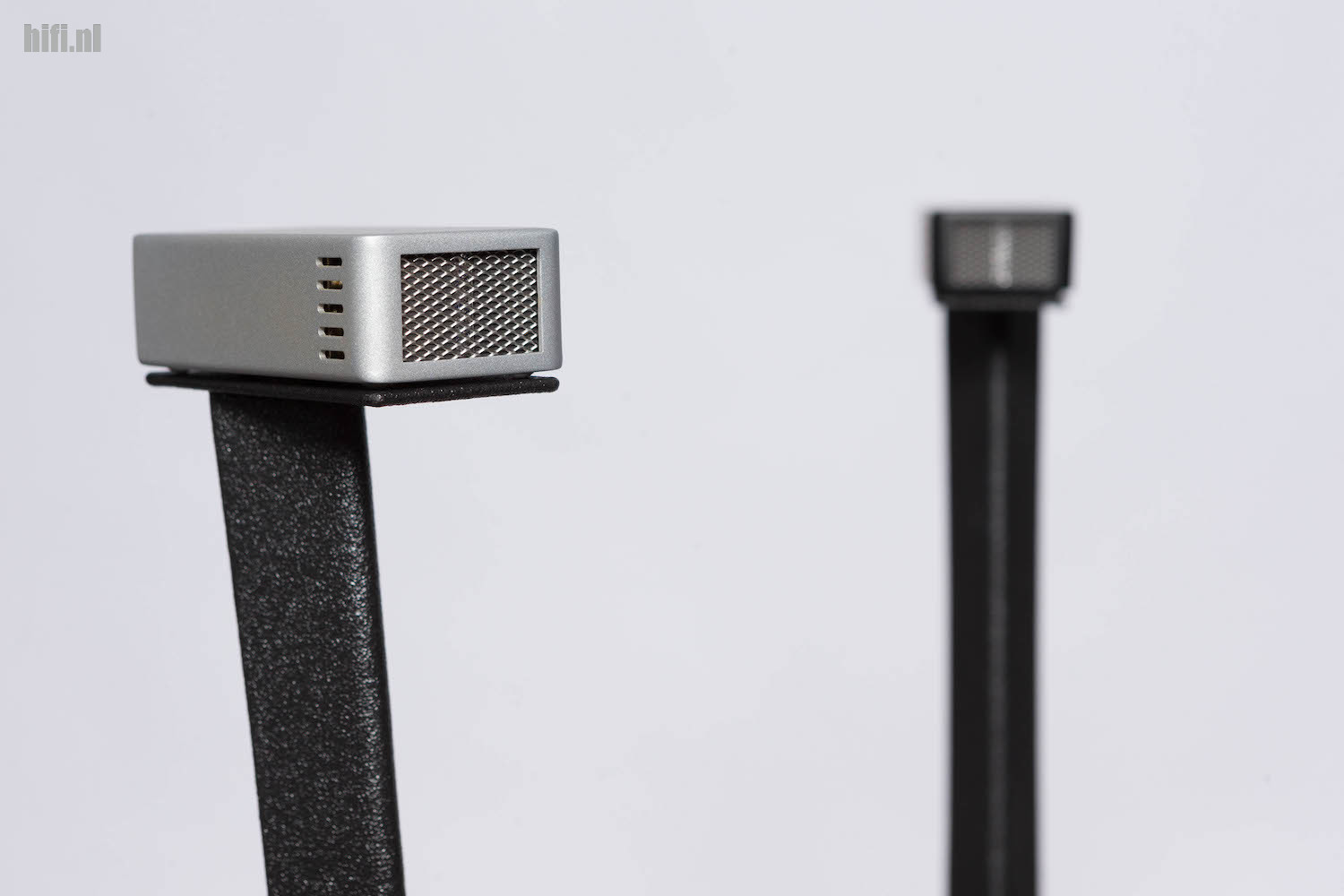
Simply spoken it is stated here that during low level listening, the output impedance of the passive preamplifier already has an optimal value. That basically means that if you turn up the volume from that point, the output impedance will get higher and the signal will actually get worse. But, in practice and only under very bad conditions, you talk about an attenuation of highs above 20kHz of at most 0.3dB. For those who want to build their own passive preamplifier, this is possible on the basis of a 10K log potentiometer. Most sources can drive that and that 10K is parallel to the input impedance of the destination (power amp).
Get rid of the arguments
In any case, most arguments against the use of passive pre-amps expire. Resistors based controls can generate noise. But, that's minimal. It must be the case that the source has sufficient output voltage to drive a power amplifier completely. Passive pre-amps do not amplify. That is a valid argument why a passive preamplifier is not sufficient in specific situations. Namely if a power amplifier needs too much input voltage to reach its maximum output. The dynamics that you experience is actually the dynamics that the source provides. This may only decrease if the passive preamplifier is poorly designed or if the output impedance of the source is much too high.
Transformer-Based Passive Pre-amps
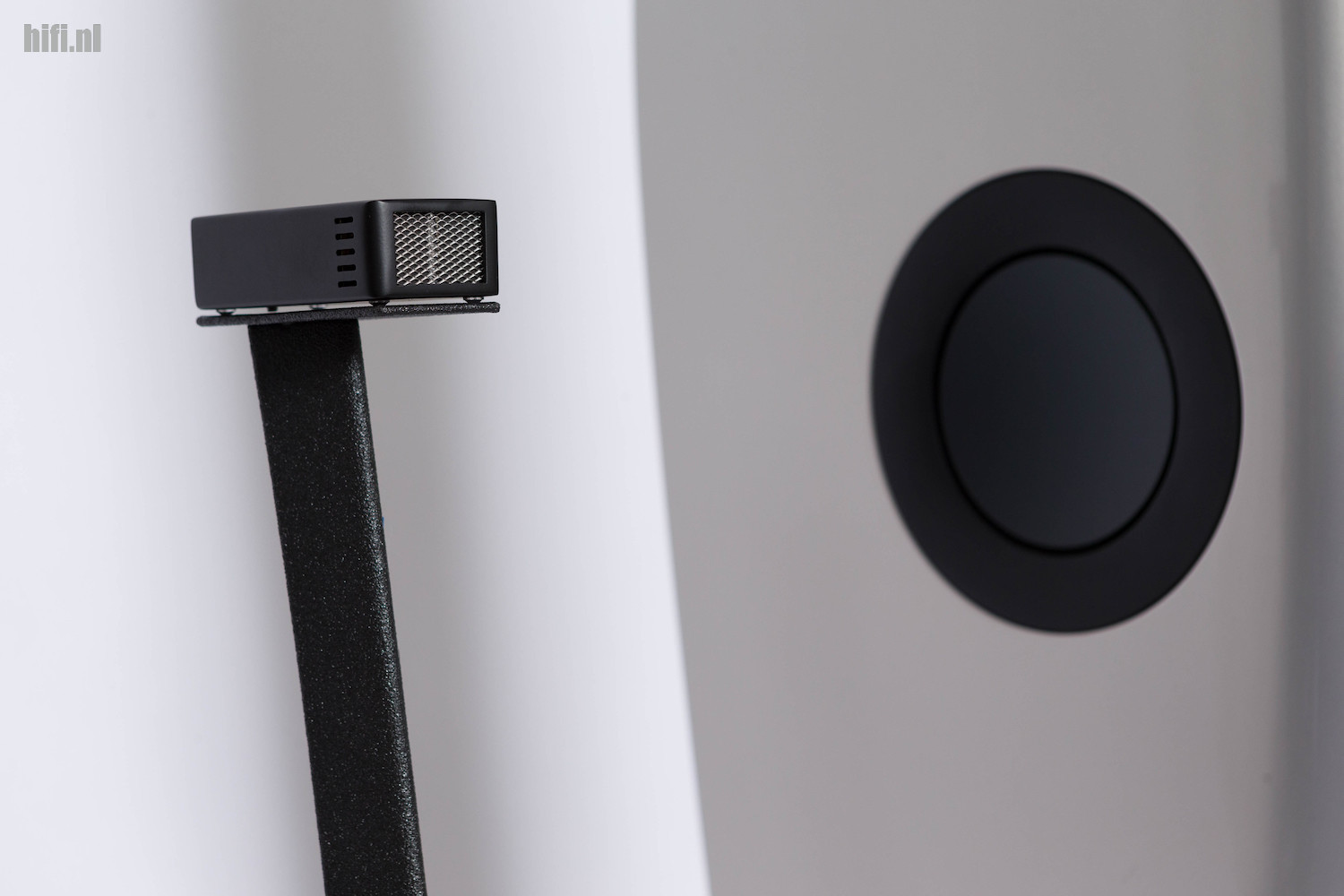
By now it will be clear that the challenge for any type of active or passive preamplifier is to maintain control over what happens within the 'impedance domain'. This concerns the output impedance of the source that might be too high, the input impedance of the preamplifier is too low, the output impedance of the preamplifier is too high and the input impedance of the power amplifier is too low. These values that are too high can all lead to a loss of dynamics, drive and deviations in the frequency curve. The transformer-based passive preamplifier does not have materials that have a resistance in the sense that potentiometers and step switches have. So there is no issue with possible noise. Many transformer-based passive pre-amps have a single long coil with taps. Each tap corresponds to a certain amount of attenuation (decibel level). By making combinations of these taps, a certain output level can be selected. For that choice a step switch can be used or a bank with relays, possibly controlled by a microprocessor, which then make the combinations.
A transformer-based passive preamplifier also requires control within the impedance domain. With the Allegri Reference there is a very small influence on the frequency response based on the impedance of the source and the setting of the volume. Townshend states that the output impedance at full volume open does not exceed 150 ohms. The input impedance is then 200kOhm at a normal listening level (-10dB, according to Townshend) and drops to 20kOhm at full volume open, if the input impedance of the power amplifier is 20kOhm. During the review, one of the power amplifiers used has an input impedance of at least 100kOhm (unbalanced). The source, in the form of a converter, has an output impedance of 100ohm. Those are numbers that don't put the Allegri in trouble. The Allegri Reference has an extremely low distortion that is independent of the volume level and of the load.
Townshend Allegri Reference
The Allegri Reference offers a control range of 72.5dB in 129 steps of 0.5dB. The secondary winding of each of the two present auto transformers consists of 260 meters of 0.1mm wire. That wire is wound 48 times around 48 pins. Those pins make contact with 96 aerospace grade gold contact reed relays. They each guarantee at least 30 million shifts. The microprocessor present builds up a configuration of those relays for each of the 129 volume steps, so that such a selected step offers the correct degree of attenuation.

Following on from the Townshend audio cables, the company uses the in-house developed Fractal wire, which is also cryogenically treated. With this preamplifier you can change / set the volume 30 million times before the device needs to be serviced. If you are a somewhat nervous listener who changes the volume a hundred times every day, then in the year 2843 you should call your hifi dealer to purchase a set of new relays. It might be wise to put this appointment in the agenda.
Technical specifications
The auto transformer applied by Townshend has a narrower core compared to other transformers in the market. This results in a more linear frequency curve, reaching between 0.1dB points from 0.8Hz to 80kHz. The transient response of the transformer is also better. With a transformer volume control, the frequency range depends, among other things, on the value of the load in which the signal is sent and on the degree of attenuation set. Factory measurements indicate that at a 10dB attenuation in a load of 20kHz there is a small increase (max. 0.4dB) from 15kHz. A similar story applies to step attenuators with resistors.
The general theory indicates that if there are large deviations from the principle that the source must have a low output impedance, driving towards a high output impedance, there may be consequences for the frequency curve, transient response and dynamics. This applies to the feeding of a signal via a potentiometer, a step switch or an auto transformer, for the connection via cables from, for example, a preamplifier to a power amplifier and for the adaptation of a phono cartridge to a phono input. So you can do it wrong, by choosing components that do not match or by using the wrong cables.

The general opinion regarding the use of auto transformers is that any problems that can arise due to the set attenuation level and the loading are actually negligible. It will also be appreciated that the Allegri Reference has very low distortion and a high channel separation. The connections can be made using XLR or RCA cables. There are 5 inputs and 3 outputs connected in parallel. The symmetrical inputs and outputs are pseudo-symmetrical. This Allegri does not have a balanced architecture. The negative input (and also the output) are connected to pin 1. So it is a single ended system. The Allegri Reference has 5 line inputs (xlr and rca), a large display with indications in dB or in numerical steps from 0-129, and an input channel indication. There is one knob for channel selection and one for the attenuation level. The dB steps are each 0.5 dB. These functions are all accessible via the Apple remote control. There is a separate power supply for the microprocessor, the relays and the display. It is possible to connect a better power supply, but in practice that proves to be pointless.
Two sets
The Allegri Reference was listened to in two sets, specially constructed for that purpose. After a few days of listening, those sets are scrapped again and the equipment goes back to importers, shops, the warehouse and some audio friends. That is a lot of hassle, but it is almost impossible to do a review with the same set over and over. This is more often possible for a source component, but amplifiers and speakers have to match. Still, for source components, you can't judge a very high-quality turntable or cd player in a set of lesser quality. So setting up a good test system is quite labor intensive. Having a different set also has the advantage that you will not take your built-up sound as a kind of reference. The first set happened to be standing by in one of the listening rooms.
Acoustic bubble
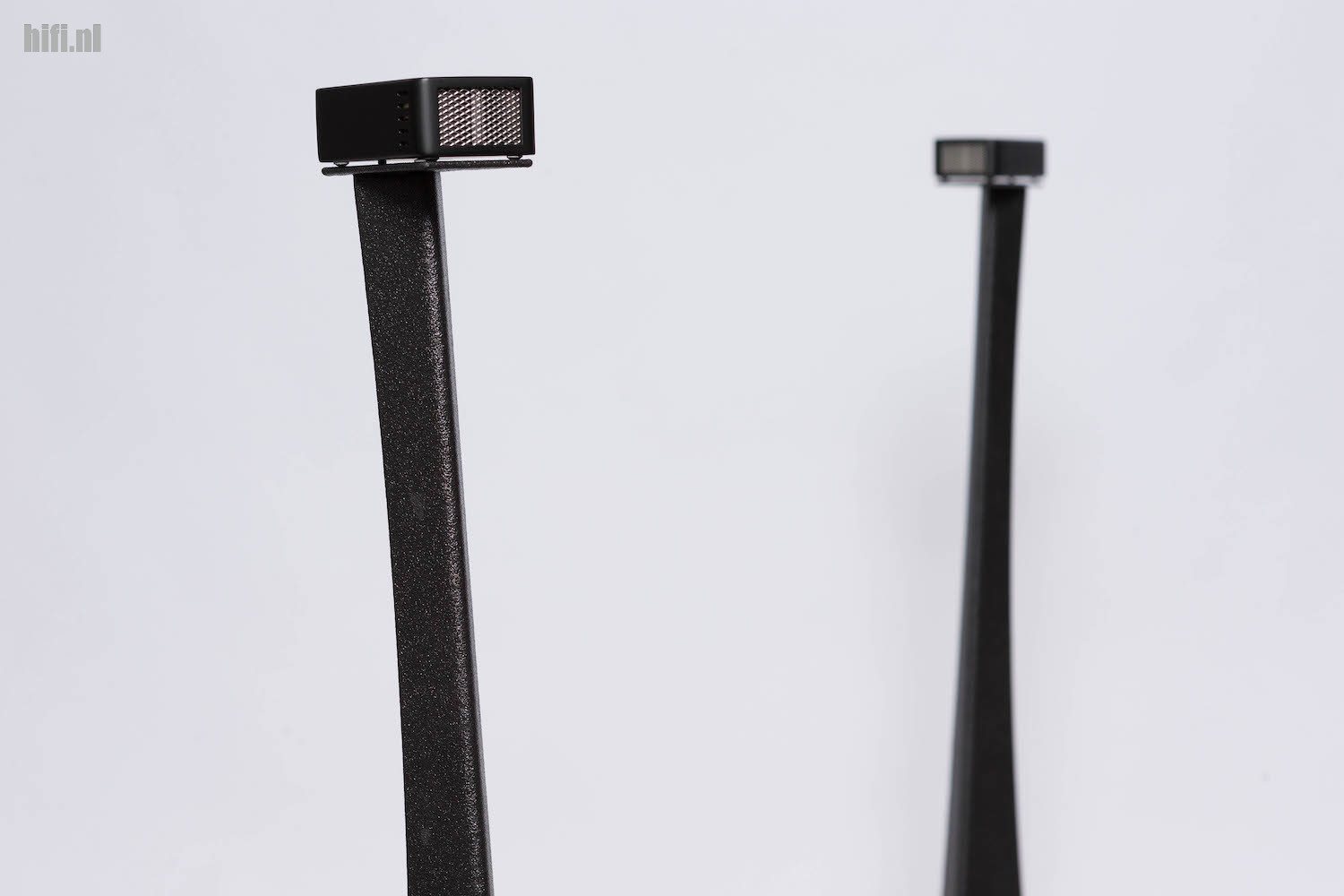
The second set had to be completely built up. The tuning took 3 hours and there was some hassle with cables. The intention was that the system should sound as natural as possible. As soon as a cable causes some graininess or distortions in the linearity of the frequency range, you immediately have the feeling that the music no longer sounds natural. Of course, what the second system did after tuning cannot be fully attributed to the Allegri Reference. However, the goal was to build a system with a full 3D immersive sound stage, realistic sounding and of course as neutral as paint without color, white or black. We succeeded, even with the use of an active preamplifier. Such a 3D immersive sound stage means that the sound is really holographic and hangs completely free in the room like a kind of acoustic bubble. Actually, one of the best things you can do with an audio system.
An example of what can happen is that the bass, which can be heard in the right channel on Friedrich Gulda's famous Blues for HG, is just right next to you. On Horace Silver's Calcutta Cutie (Song for my Father), the percussion is to the right of the listening position and the horns are directly to the left of the listening position. Groove Me Up by Gare du Nord also offers an immensely wide stereo panorama. As a listener you are totally included in the acoustic bubble. That is a slightly more extensive experience than the stage that consists of a straight line between both loudspeakers and where you can hear the different instruments neatly next to each other without further depth, height and width. Of course, you can't achieve such an immersive stage with every combination of audio components. It takes some work.
Listening

The Allegri Reference therefore runs in two systems that are as neutral as possible, but in each system an active preamplifier is first placed that matches well in those sets. Switching to the Allegri does not mean that there will be earth-shaking changes, but that is simply because the active pre-amps used already have a high-quality level and operate very neutrally. However, what changes after switching on the Allegri Reference is certainly remarkable. The tonal balance is immediately restored to as registered on the playback medium (cd, file or stream). That is most noticeable with the lower frequencies. Many audio systems blow the bass as a result of wrong cables, a wrong match and, for example, a preamplifier that accentuates the bass. That doesn't happen with the Allegri. This device represents the tonal balance as recorded. It makes clear that some classical recordings have less bass. The audio signal also sounds very clean. Literally as if some distortion has disappeared. On certain recordings you have those instruments and voices that get stuck when playing together and therefore continue to sound less transparent and loose (intermodulation distortion). With the Allegri that problem is completely gone. An active pre-amp anyway introduces a complex pattern of distortions, influences of EMI and RFI, tonal aberrations, anomalies in tonal balance, phase shifts and so on.
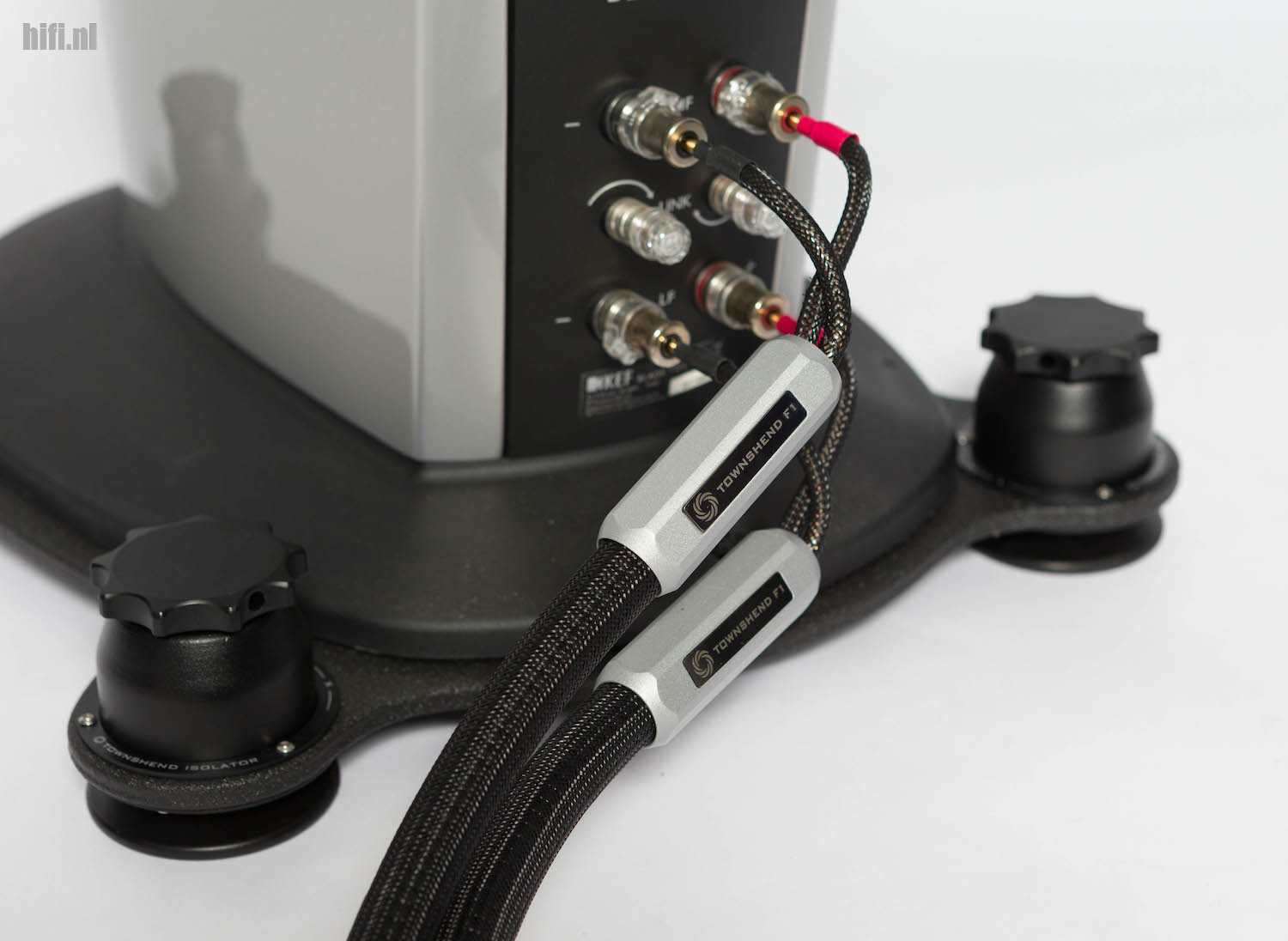
Entire books have been written about the volume control in an active preamplifier. Every manufacturer has come up with something that should be extremely good. Digital, based on opto-technology, step switches with resistors that NASA uses, VCAs that are operated with a control voltage, the famous Alps potentiometer and solutions with a piece of electronics that is controlled by a rotary encoder. However, each solution has advantages and disadvantages. As good as such a pre-amp is, it is basically the sum of all the misery you can cause with electronics. Our ears are so extremely sensitive that we also perceive that whole complex. This apparently results in something that we experience as more unnatural. Why, without seeing it, do we know almost immediately whether reproduced sound is coming from loudspeakers or real instruments? If you replace the entire complexity of a preamplifier with a passive one, then you apparently clear up a number of causes that make us experience sound as sounding artificial. Maybe also think about a passive power amplifier?
Natural and transparent sound
With the Allegri there is no sign of a decrease in dynamics or spaciousness of the reproduction. Also, no decrease in detail, focusing and timbre. The net result is actually that the system will sound more natural and much less hifi-like. You realize in such a moment that many systems still present a kind of unnatural sound. Something that does not exist when you listen to acoustic instruments in a studio. To be fair, the better active pre-amps are close to what the Allegri does. Such amps are also less 'hifi', sound more neutral and often don't have the type of distortion that the Allegri of course totally misses.
Compared to the initially secretly connected active preamplifier, the difference with the Allegri was not very big. But still it was get used to. A few days of doubt then pass. That's a natural defense mechanism. You change something in your habitat. Danger lurks. Is the new situation safe and is it really true what you hear? But, to be fair, gradually there has been increasing appreciation for what the system, including the Allegri, has been doing. Something that says that perception of music is closer to real live sound. Basically, the same process as falling in love. This time not on something blond, intelligent and with a pleasant character (no beer is meant here), but on a metal box with several hundred meters of copper wire and clicking relays. How romantic is that? Looks like some further deformation of the human species.

As with the blond lady, the Allegri won't be everyone's cup of tea. The signal at the output of a passive preamplifier is the signal that the source sends out. That must be strong enough to fully drive the power amplifier. For those who are very attached to the pleasures of a richly coloring and pleasantly distorting preamplifier, living with the Allegri can be difficult. But, the undersigned has slowly shifted towards 'it is not certain whether a life is possible without the Allegri'.
Ultimate Experience
The ultimate experience with the Allegri is that the sound comes across more natural and transparent, without being able to pinpoint exactly how it all comes about. The undersigned is still in a kind of incubation period with regard to the Allegri. While most of the systems built here are already an example of not sounding like a wrought-up hifi setup.
Application of the Allegri will also lead to withdrawal symptoms in many hifi fanatics. However, the reverse process may be even more difficult. Going back to an active pre-amp can mean that the graininess, the influence on the tonality and the disturbed tonal balance will suddenly be experienced as quite different from reality. Obviously also dependent on the quality of that active preamplifier.
Epilogue
Less is more. This also largely applies to hi-fi systems. At a higher level of abstraction, a hi-fi system is a composite of all kinds of distortion and horrible problems. Anyone who visits an audio show will have to admit that most systems produce a sound that is often far from natural and realistic sound. Just listen to a few kids from the music school. Violin, guitar, a tambourine and flute. Do you really dare to claim that your hifi set even comes close to that?
There are only a few systems in the world that can present sound in any way credible. That has almost nothing to do with the amount of money you invest. To put it simply, you say goodbye to an enormous amount of distortion through the application of the Allegri Reference. That is really perceptible, takes some getting used to, but after a long battle with your ego, which will deny the Allegri's qualities, you have to admit that such a hifi system is something closer to a natural representation.

You can have a long discussion about the alleged drawbacks of passive volume controls. But, if you do, you should do the same for active pre-amps. Most likely the last list is a lot longer. Whatever the perceived drawbacks of passive volume controls, Townshend has really gone to great lengths to minimize them. The listening experiences have shown that it is not so much about the quality of the Allegri Reference. It is of a high level. So, the question is not whether or not you should buy an Allegri Reference, but the pain lies in saying goodbye to active pre-amps. If you just bought a very expensive pre-amp and that Allegri plays just that little bit better. Even if you suddenly perceive the beauty and transparency in the middle area.
To be fair, there are some active pre-amps that also come close to the Allegri. What bothers in any case is having emotion in audio products. Yours truly knows some audio buddies with a set assembled based on emotion and as a result represents just about anything that can go wrong. If you lose your objectivity and distance, you won't be able to put together a good set.
To conclude
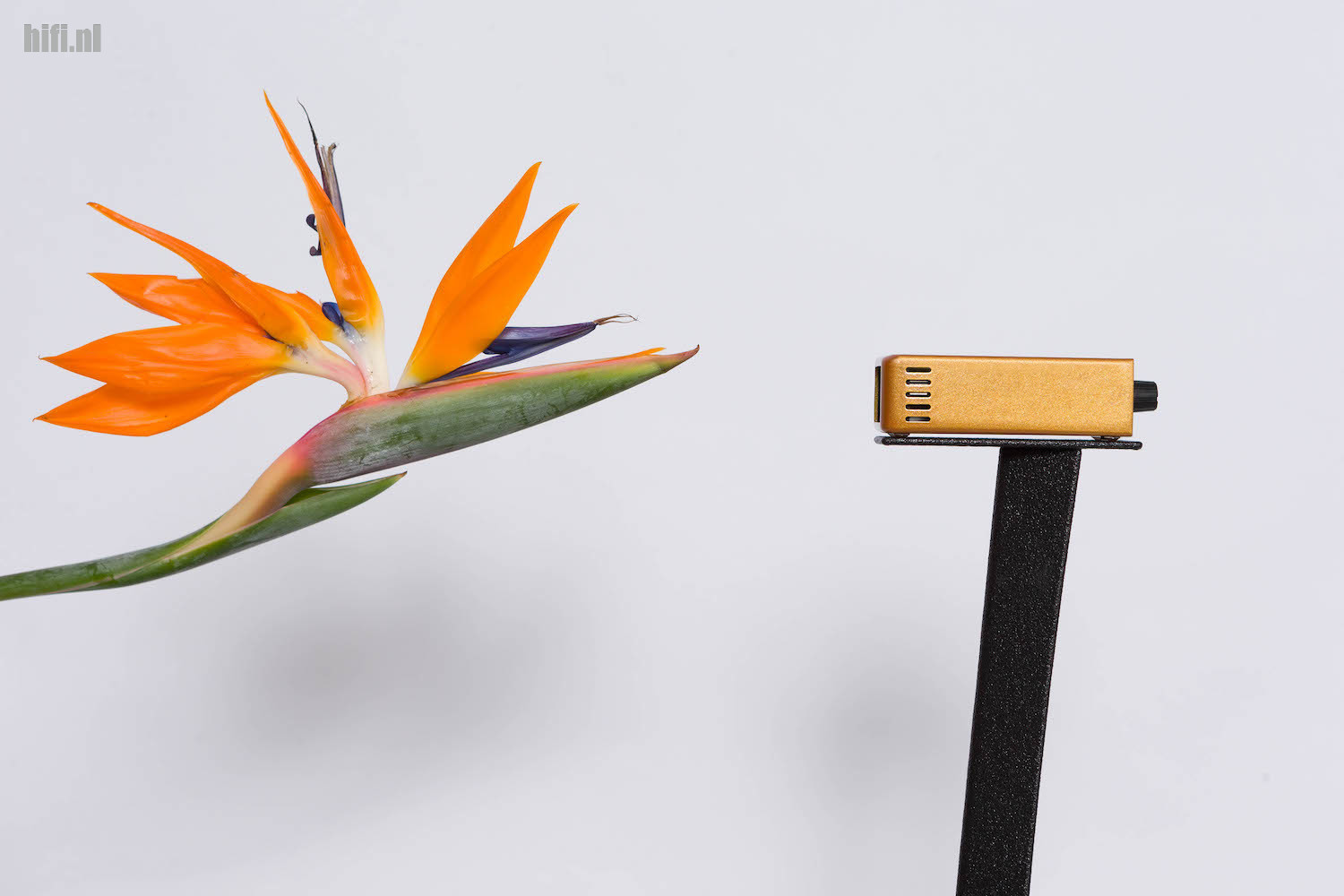
It was quite a step to start listening to a passive preamplifier. However, the listening experience has shown that the Townshend Allegri Reference has nothing to be negative about. The unit functions like all the best active pre-amps do. In essence, you distance yourself from the hi-fi effect as much as possible. In any case, you should also listen for yourself. The Allegri Reference is almost literally and figuratively the straight wire without reinforcement and without distortion.
The cliffhanger is of course which is the best active preamplifier. Formally spoken, the amplifier that changes as little as possible in the offered signal compared to the Allegri. If you really think that your active pre-amp sounds 'better' than the Allegri and 'adds' something to the sound, then you are basically saying that you enjoy listening to distortion. Why would you do this to yourself?
Allegri Reference
8900 euro | townshendaudio.com




